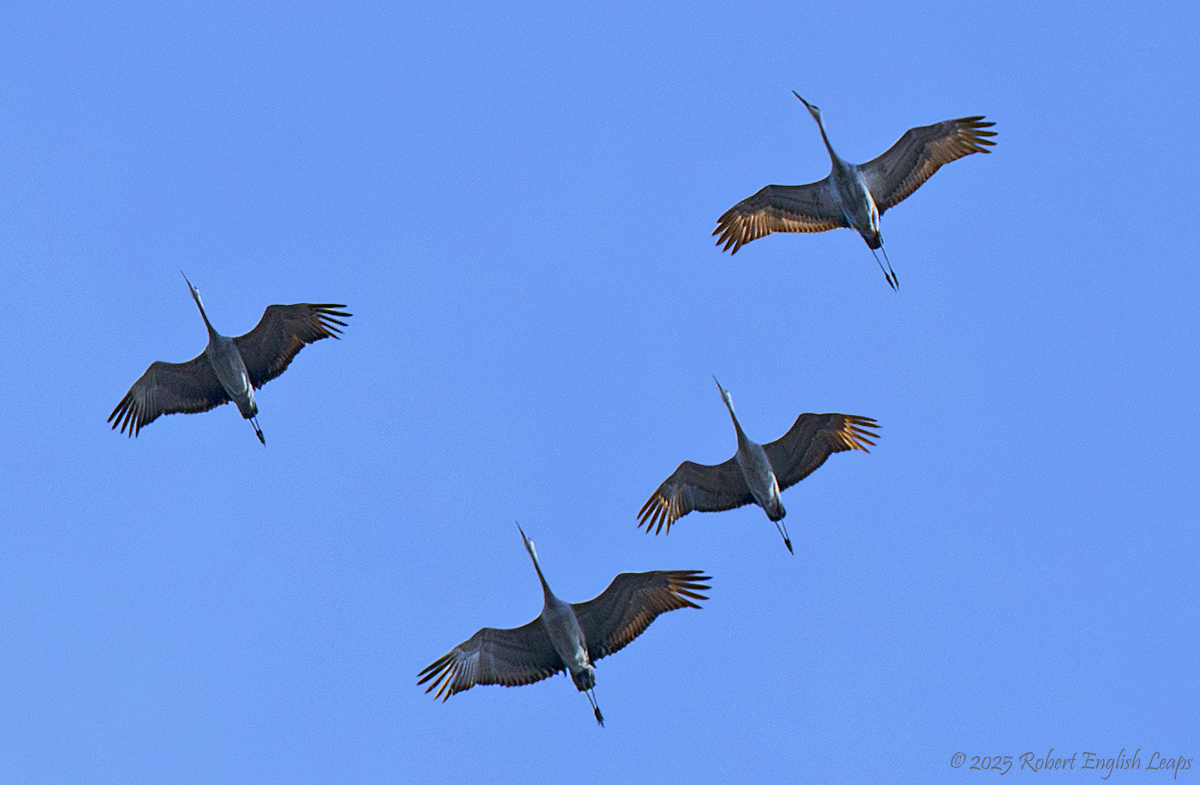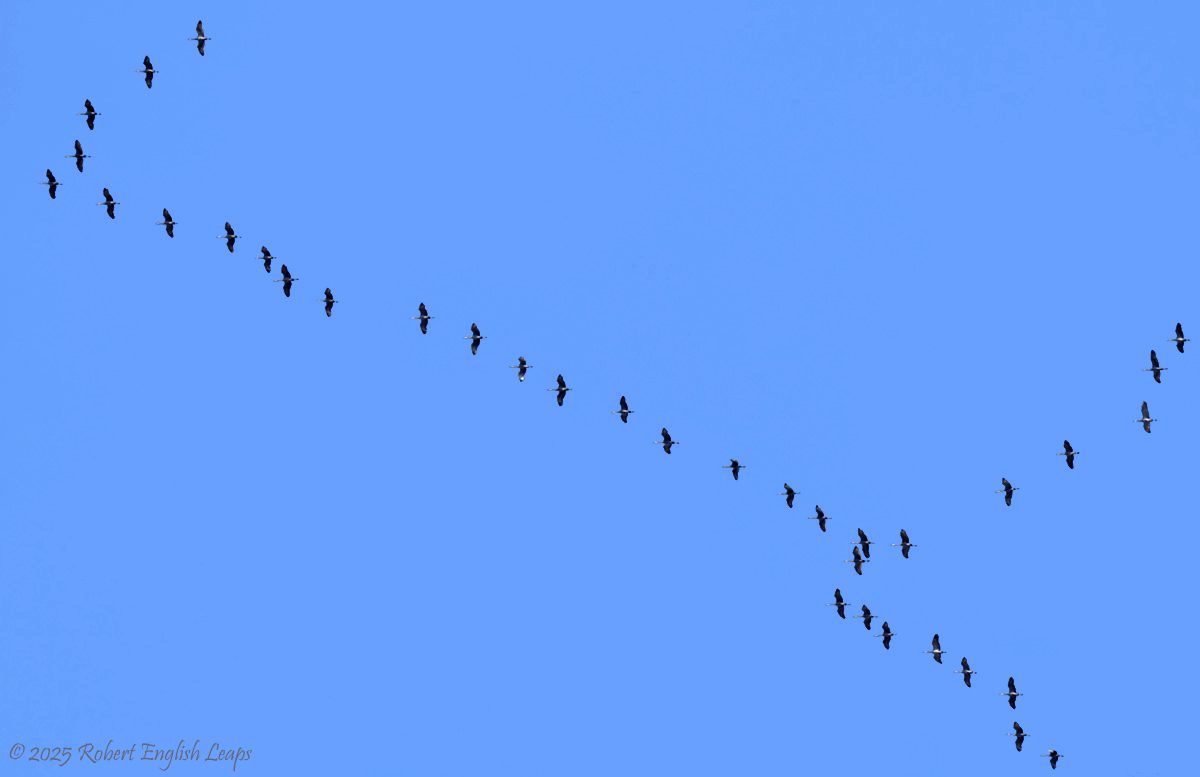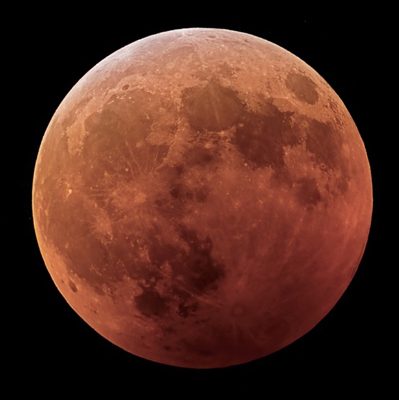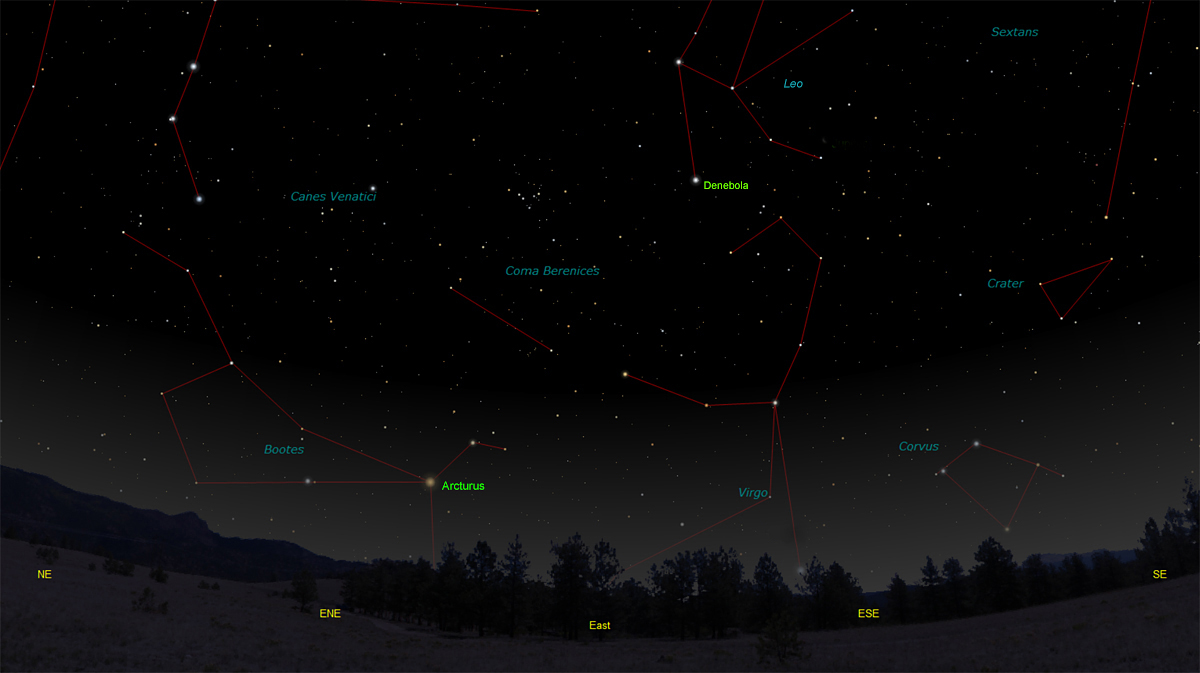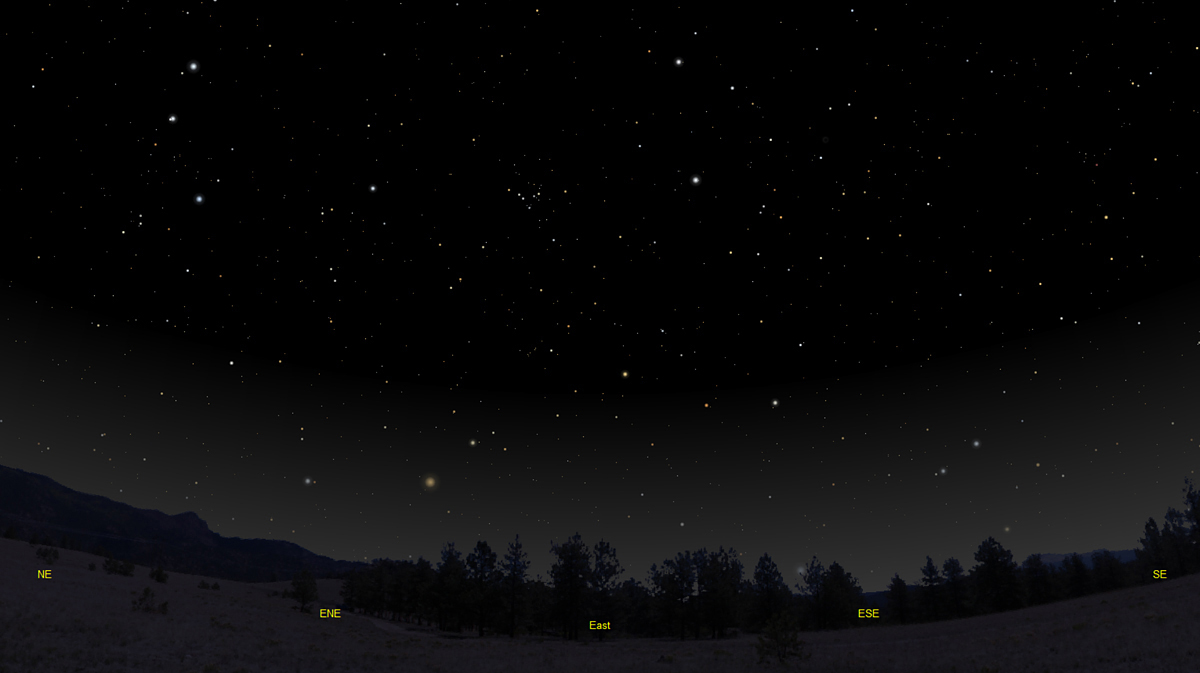The purpose of this feature is to give scout leaders, educators and naturalists an idea of some of the natural events coming up each month. We will try to cover a variety of natural events ranging from sky events to calling periods of amphibians, bird and mammal watching tips, prominent wildflowers and anything else that comes to mind. We will also note prominent constellations appearing over the eastern horizon at mid-evening each month for our area for those who would like to learn the constellations. If you have suggestions for other types of natural information you would like to see added to this calendar, let us know! Though we link book references to nationwide sources, we encourage you to support your local book store whenever possible.
Notes and Images From February 2025 There are certain natural sounds that seem to evoke a feeling of wilderness, no matter where you hear them. The calls of Great Horned Owls are like that for me. So are the spring calls of loons. I think the calls of migrating Sandhill Cranes do that as well. It's not just the call. It's also seeing those large flocks of cranes high overhead, all heading north. You wonder what their journey will show them. Part of you wants to go along, to see the world through their eyes. On the morning of February 2nd we had six or seven very large flocks of Sandhill Cranes flying north over our house. As usual, we heard them before we saw them. The rattling call sounds a little bit like an open cedar box struck with a vibrating striker.
We are always surprised at how far the call carries. We expect them to be a lot closer than they are. Often we have to spend a minute scanning the sky before we spot them. But this wasn't a typical migrating flock in our experience. The "V"s were very large, and intersected other "V"s. In one group we counted 150 cranes. The image below, made with a 600mm lens, shows just a small part of one group.
We saw one large flock after another pass by, separated by just a few minutes. This was very different from the isolated flocks we normally see. It occurred to me that there might be some advantage to the close spacing of these flocks. In my experiences flying sailplanes cross county, I usually flew alone. But if you had another group of gliders (or raptors) circling in lift in the direction you were going, it helped to find rising air. You could travel faster that way. These individual groups of Sandhill Cranes could be in sight of each other. It might be beneficial to fly in these loosely-connected "super-flocks". In any case, we wished them safe travels. , Sky Events for March 2025:
You don't need a telescope for this. By far the best views of a lunar eclipse are with either the naked eye or a pair of binoculars. The binoculars will allow you to see the colors better. Totality begins at 1:26am CDT, the midpoint of the eclipse will be around 1:59am CDT, and totality ends around 2:32am CDT. Because the Moon does not pass exactly through the center of Earth's shadow, the north limb of the Moon (the top of the image at right) will be brighter than the south limb, as was true with the 2019 eclipse shown. Daylight Savings Time will begin on March 9th. The Vernal Equinox occurs at 4:01am CDT on March 20th, marking the beginning of spring in the Northern Hemisphere.
Evening Sky:
You can actually see the crescent shape of Venus with binoculars and it will look about the same as the image at right. It will be tiny, but it will be there. There's a trick to this. Most people wait till it's dark to view Venus in binoculars. If the sky is dark the brilliance of Venus will make the crescent form difficult or impossible to see. The trick is to start right after sunset while the sky is still bright. You probably won't see Venus until about 10 or 15 minutes after sunset, but if you can catch it while the sky is still bright the crescent form is much easier to see. But it's important to always wait until the Sun sets. You can permanently damage your eyes if you sweep across the Sun with binoculars. It always helps to steady your hands on something like the side of a car. I could see the crescent on March 1st with my 8x25 compact binoculars. Another trick you can use to make the crescent more obvious is to make some cut-outs with a small central hole to put over the objective (front) lenses of your binoculars. This both reduces the brightness of the image and the smaller exit pupil uses only the best part of the lens in both your binoculars and your eye. This further improved the image with my 8x25's. As the month progresses Venus will appear lower in the sky each day after sunset. As it does, the crescent will appear both thinner and larger. That's because Venus is moving between Earth and the Sun at this time. From March 27th till the end of the month, see if you can see the wafer-thin crescent in the morning sky 15 to 30 minutes before sunrise. Mercury reaches it's greatest distance from the Sun on March 8th. It should be easy to pick up below and to the left of Venus looking due west. Try for it about 30 minutes after sunset. Jupiter is about 73 degrees above the southwest horizon in Taurus at the beginning of the month. Over two-thirds of the combined mass of all of the solar system's planets is in your field of view when you aim your telescope at Jupiter.
I've had some very memorable experiences observing Mars over the years. I love to spend relaxed time just looking for surface details. I once spotted a feature on the planet's surface that was named Nodus Alcyonius. That led me to the Greek mythology and Ovid's telling of the legend of Alcyone and Ceyx, which in turn led me to the origin of the scientific name of our Belted Kingfisher. I've never looked at kingfishers the same way since. If you are interested in the history of Mars observations, the "canals" and other Mars trivia, you can find a much more in depth discussion here.
Constellations:
The views below show the sky looking east at 9:00 p.m. CST on March 7th. The first view shows the sky with the constellation outlines and names depicted. Star and planet names are in green. Constellation names are in blue. The second view shows the same scene without labels. The constellation Leo is well placed now and across it are many bright galaxies. One of them is Messier 96, shown in the image at right. This galaxy is one of 18th century French comet hunter Charles Messier's catalog of objects which might be confused with comets. Messier ending up cataloging some of the most beautiful galaxies, nebulae and star clusters in the sky. Note the faint and much more distant edge-on galaxy 2MFGC8391 shining through the upper arm of Messier 96 above the core of the galaxy. Their are many other faint galaxies in the image.
On Learning the
Constellations: We advise learning a few constellations each month, and then following them through the seasons. Once you associate a particular constellation coming over the eastern horizon at a certain time of year, you may start thinking about it like an old friend, looking forward to its arrival each season. The stars in the evening scene above, for instance, will always be in the same place relative to the horizon at the same time and date each March. Of course, the planets do move slowly through the constellations, but with practice you will learn to identify them from their appearance. In particular, learn the brightest stars (Like Arcturus and Denebola in the above scene looking east), for they will guide you to the fainter stars. Once you can locate the more prominent constellations, you can "branch out" to other constellations around them. It may take you a little while to get a sense of scale, to translate what you see on the computer screen or what you see on the page of a book to what you see in the sky. Look for patterns, like the stars of Corvus the Crow. The earth's rotation causes the constellations to appear to move across the sky just as the sun and the moon appear to do. If you go outside earlier than the time shown on the charts, the constellations will be lower to the eastern horizon. If you observe later, they will have climbed higher. As each season progresses, the earth's motion around the sun causes the constellations to appear a little farther towards the west each night for any given time of night. The westward motion of the constellations is equivalent to two hours per month. Recommended: Sky & Telescope's Pocket Star Atlas is beautiful, compact star atlas. A good book to learn the constellations is Patterns in the Sky, by Hewitt-White. For sky watching tips, an inexpensive good guide is Secrets of Stargazing, by Becky Ramotowski.
A good general reference book on astronomy is the Peterson
Field Guide,
A Field Guide to the Stars and Planets, by Pasachoff. The book retails for around $14.00.
The Virtual Moon Atlas is a terrific way to learn the surface features of the Moon. And it's free software. You can download the Virtual Moon Atlas here. Apps: The Sky Safari 6 basic version is free and a great aid for the beginning stargazer. I really love the Sky Safari 6 Pro. Both are available for iOS and Android operating systems. There are three versions. The Pro is simply the best astronomy app I've ever seen. The description of the Pro version reads, "includes over 100 million stars, 3 million galaxies down to 18th magnitude, and 750,000 solar system objects; including every comet and asteroid ever discovered." You may also want to try the very beautiful app Sky Guide. Though not as data intensive as Sky Safari, Sky Guide goes all out to show the sheer beauty of the night sky. Great for locating the planets. A nother great app is the Photographer's Ephemeris. Great for finding sunrise, moonrise, sunset and moonset times and the precise place on the horizon that the event will occur. Invaluable not only for planning photographs, but also nice to plan an outing to watch the full moon rise. Available for both androids and iOS operating systems.
Amphibians:
Recommended: The Frogs and Toads of North America, Lang Elliott, Houghton Mifflin Co.
Archives (Remember to use the back button on your browser, NOT the back button on the web page!) Natural Calendar February 2025 Natural Calendar December 2024 Natural Calendar November 2024 Natural Calendar September 2024 Natural Calendar February 2024 Natural Calendar September 2023 Natural Calendar February 2023 Natural Calendar September 2022 Natural Calendar February 2022 Natural Calendar December 2021 Natural Calendar November 2021 Natural Calendar September 2021 Natural Calendar February 2021 Natural Calendar December 2020 Natural Calendar November 2020 Natural Calendar September 2020 Natural Calendar February 2020 Natural Calendar December 2019 Natural Calendar November 2019 Natural Calendar September 2019 Natural Calendar February 2019 Natural Calendar December 2018 Natural Calendar September 2018 Natural Calendar February 2018 Natural Calendar December 2017 Natural Calendar November 2017 Natural Calendar October 2017Natural Calendar September 2017 Natural Calendar February 2017 Natural Calendar December 2016 Natural Calendar November 2016 Natural Calendar September 2016Natural Calendar February 2016 Natural Calendar December 2015 Natural Calendar November 2015 Natural Calendar September 2015 Natural Calendar November 2014 Natural Calendar September 2014 Natural Calendar September 2013 Natural Calendar December 2012 Natural Calendar November 2012 Natural Calendar September 2012 Natural Calendar February 2012 Natural Calendar December 2011 Natural Calendar November 2011 Natural Calendar September 2011 Natural Calendar December 2010 Natural Calendar November 2010 Natural Calendar September 2010 Natural Calendar February 2010 Natural Calendar December 2009 Natural Calendar November 2009 Natural Calendar September 2009 Natural Calendar February 2009 Natural Calendar December 2008 Natural Calendar November 2008 Natural Calendar September 2008 Natural Calendar February 2008 Natural Calendar December 2007 Natural Calendar November 2007 Natural Calendar September 2007 Natural Calendar February 2007 Natural Calendar December 2006 Natural Calendar November 2006 Natural Calendar September 2006 Natural Calendar February 2006
Natural Calendar December 2005
Natural Calendar November 2005
Natural Calendar September 2005
Natural Calendar February 2005
Natural Calendar December 2004
Natural Calendar November 2004
Natural Calendar September 2004
Natural Calendar February 2004
Natural Calendar December 2003
Natural Calendar November 2003 Natural Calendar February 2003 Natural Calendar December 2002 Natural Calendar November 2002 Nature Notes Archives: Nature Notes was a page we published in 2001 and 2002 containing our observations about everything from the northern lights display of November 2001 to frog and salamander egg masses. Night scenes prepared with The Sky Professional from Software Bisque All images and recordings © 2025 Leaps
|
|
